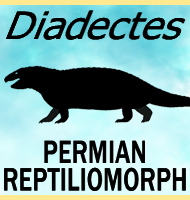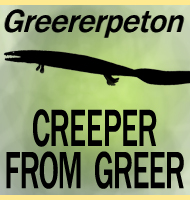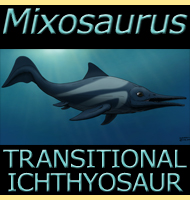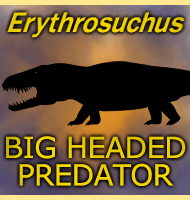


Gunakadeit
Name:
Gunakadeit
(after a sea monster in Tlingit mythology).
Phonetic: Gun-ah-kah-deet.
Named By: Patrick S. Druckenmiller, Neil P.
Kelley, Eric T. Metz & James Baichtal - 2020.
Classification: Chordata, Reptilia,
Thalattosauria, Thalattosauroidea.
Species: G. joseeae (type).
Diet: Carnivore/Pisciivore.
Size: Skull about 12 centimetres long. Total
length of preserved holotype individual about 56-57 centimetres,
but some rear portion of the tail is missing.
Known locations: USA, Alaska - Hound Island
Volcanics.
Time period: Norian of the Triassic.
Fossil representation: Almost complete skull and
post cranial skeleton.
Gunakadeit
is a genus of thalattosaur
that lived in waters around what is now
North America during the late Triassic. Gunakadeit
is a thalattosaur
genus of contrasts. In one respect Gunakadeit
appear to have been
quite primitive in form when compared to other thalattosaurs. In
another, Gunakadeit lived towards the end of the
Triassic, after
many of the more advanced form thallatosaurs had gone extinct.
Gunakadeit seems to have been an exclusively
aquatic reptile with jaws
that end in a sharp toothless point. Gunakadeit
would be expected to
have been a predator of fish and soft bodied marine creatures such as
cephalopods.
Further reading
- An articulated Late Triassic (Norian) thalattosauroid from
Alaska and ecomorphology and extinction of Thalattosauria. -
Scientific Reports. 10 (1): 1–14. - Patrick S.
Druckenmiller, Neil P. Kelley, Eric T. Metz & James
Baichtal - 2020.
----------------------------------------------------------------------------
Random favourites
 |
 |
 |




